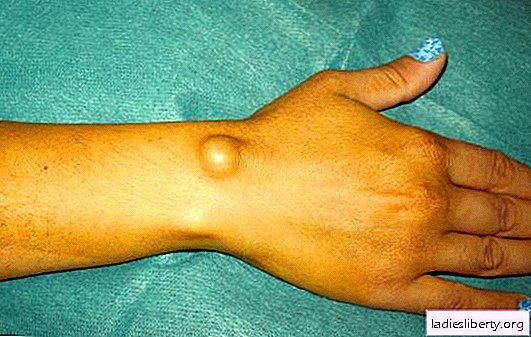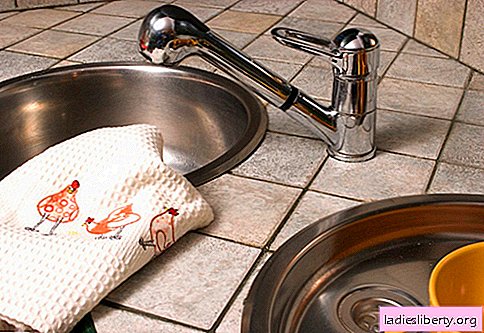
Diastasis is a divergence of muscles in the lower abdomen, which most often develops in women after pregnancy and childbirth. This phenomenon is observed in more than 35% of women in labor, therefore it is considered quite common.
In this condition, a small depression forms in the center of the abdomen of the young mother, which significantly spoils the appearance of the abdomen. Let us consider in more detail the methods of combating diastasis after childbirth and the best exercises for getting rid of it.
Causes of the development of diastasis after childbirth
The main reason for the development of diastasis is pregnancy. Moreover, the more often a woman carries a child, the higher the risk. This is explained by the fact that during pregnancy, a constantly growing fetus exerts strong pressure on the front abdominal cavity of a woman, literally stretching the muscles of her abdomen.
Another provoking factor for the development of diastasis during pregnancy is the physiology of the body. The fact is that during the period of carrying a child, a future mother in large quantities produces a special hormone - relaxin. Its action is aimed at softening the abdominal muscles and increasing its elasticity.
In most cases, after the birth of the baby, the stomach (after some time) returns to its previous muscular state, but, unfortunately, there are exceptions when the muscles and tendons are so stretched that they simply can’t contract again. This condition is called diastasis.
It is important to know, that, despite the seeming harmlessness of this condition, it needs to be eliminated, since diastasis can cause discomfort, aching pains in the lower abdomen and heaviness after physical exertion.
Besides, doctors warn that with an advanced degree of diastasis, a woman has a high risk of hernia formation and even prolapse of the internal organs of the peritoneum.
Diastasis after childbirth: provoking factors
As medical statistics show, not all women in labor are susceptible to diastasis. For example, women who play sports, pump up the muscles of the press, or at least lead an active lifestyle, are much less likely to suffer from diastasis.
The opposite situation for such groups of expectant mothers:
1. Pregnant women who, during the period of bearing a child, gained a lot of weight.
2. The presence of cellulite.
3. Strong breast augmentation.
4. Multiple pregnancy.
5. Repeated pregnancy in a short period in which the abdominal muscles of a woman have not yet managed to return to shape.
All of the above groups of women have a much greater risk of diastasis.
Detect diastasis after childbirth: test
In order to independently understand if you have diastasis or not, you need to do the following:
1. Lie on your back and spread your legs.
2. Bend your knees and press them to the buttocks.
3. Bend one arm at the elbow and put it behind the head.
4. With your second hand, feel the area of the abdomen above the navel.
5. If during palpation you feel a hollow, this is a divergence of muscles. Moreover, in severe forms of diastasis, a roll-like protrusion of the muscles above the navel is clearly felt. This is a prerequisite for the further development of a navel hernia.
Diastasis after childbirth: useful tips
In order not to worsen your condition, it is very important to adhere to the following recommendations when detecting diastasis:
1. Raise the child only in a sitting position.
2. Do not lift weights with a weight of more than five kilograms.
3. Do not lift anything heavy from below.
4. If the child can calm down only in her mother’s arms, then the woman should wear a special support postpartum bandage.
5. When sneezing, you need to put a palm on your lower abdomen and press on it so that the stretched muscles do not diverge even more and do not cause pain.
6. To lie down, as well as get out of bed, you need to gradually, pumping first on your side, and only then getting up.
7. If you need to get out of the chair, you must first transfer the weight to one buttock, tighten the stomach and only then get up. In this case, the main load must be done on your feet.
8. It is important to keep your back straight and not slouch.
9. Sleeping is recommended exclusively on the back. It is undesirable to lie on your stomach, since this increases the pressure on the already weakened tendons of a young mother several times.
Moreover, with diastasis, you can not do this:
1. You can not perform physical activity that can increase intra-abdominal pressure.
2. You can’t raise your legs high while still lying down.
3. You can not do exercises such as "scissors" or "bicycle", as they stretch the muscles of the abdomen.
4. You can not jump and push ups.
5. It is not recommended to pull up on the horizontal bars (there is an opinion that such an exercise can relieve diastasis, but this is a myth).
6. Do not make deep inclines, especially in order to lift something heavy.
7. It is strictly forbidden to download the press.
8. It is undesirable to inflate the stomach. Also, you can not eat foods that contribute to bloating.
Diastasis field of labor: features of elimination
Unfortunately, diastasis alone cannot disappear. Moreover, if untreated, it will only increase in size.
Best of all, special physical exercises are struggling with this phenomenon, which are aimed at quickly strengthening the stretched muscles of the abdomen. They will help to relieve diastasis of 1 and 2 degrees. With a third degree of neglect, diastasis will have to be removed surgically.
You can do physical exercises with diastasis two weeks after the birth (in the absence of any complications in the young mother). The duration of their implementation should be from ten to twenty minutes twice a day.
For breast-feeding women, all exercises should be done one hour before breast-feeding or immediately after feeding.
The most effective exercises for diastasis are:
1. Respiratory gymnastics. To do this, slowly draw in the stomach at the entrance and hold yourself like that for twenty seconds. As you exhale, slowly relax your abdominal muscles and straighten your back. Repeat the exercise as often as possible. It will strengthen the muscles of the peritoneum.
2. Exercise on the bed. To do this, lie on your back and put your legs together. Raise your head and shoulders and keep yourself in this position for half a minute. Repeat ten times in one go.
3. Lie on your back and bend your knees. Put your hands along the torso. Slowly raise the pelvis up. In this case, you need to try to strain all the muscles of the back, buttocks and pelvis. The breathing should be chest (you can not strain the stomach).
With this exercise, you can strengthen your abs and thigh muscles. Repeat it three times a day.
4. Take a lying position and turn on its side. As you exhale, bend your right leg. Raise your hands as you inhale. Thus, you need to make five movements that simulate blows on the water surface. Repeat 10 times.
5. Raise two legs at once while lying down. They should be bent at right angles. You can also put a small ball between your knees.
6. Kneel down and lean on your hands. Try to retract the stomach while keeping the body level. On the exhale, straighten one leg. On inspiration, return it to its original position. Do the same with the other leg. Repeat ten times.
In addition to the above exercises, Pilates will help to cope with diastasis. It is a fairly effective technique, which is based on exercises to tighten the muscles of the body without a strong load. Pilates is also recommended for those women who have diseases of the back and lower back.
In order to prevent the development of diastasis, even during care, you should adhere to such doctor's advice:
1. Walk straight and do not slouch, even if a large belly interferes. In addition, there are now many supportive bandages that will help relieve stress from the back in the late stages of pregnancy.
2. In the absence of contraindications, you need to perform special exercises for pregnant women.
3. It is very useful to engage in swimming, as the strength of the water will perfectly support the muscles of the body. Thanks to this sport, you can not only prevent the appearance of diastasis, but also protect yourself from skin stretch marks.
As practice shows, postpartum diastasis is quite successfully eliminated, especially when a woman follows all the recommendations of a doctor and does the necessary exercises. Moreover, the frequency and intensity of physical activity plays an important role in the fight against diastasis.











